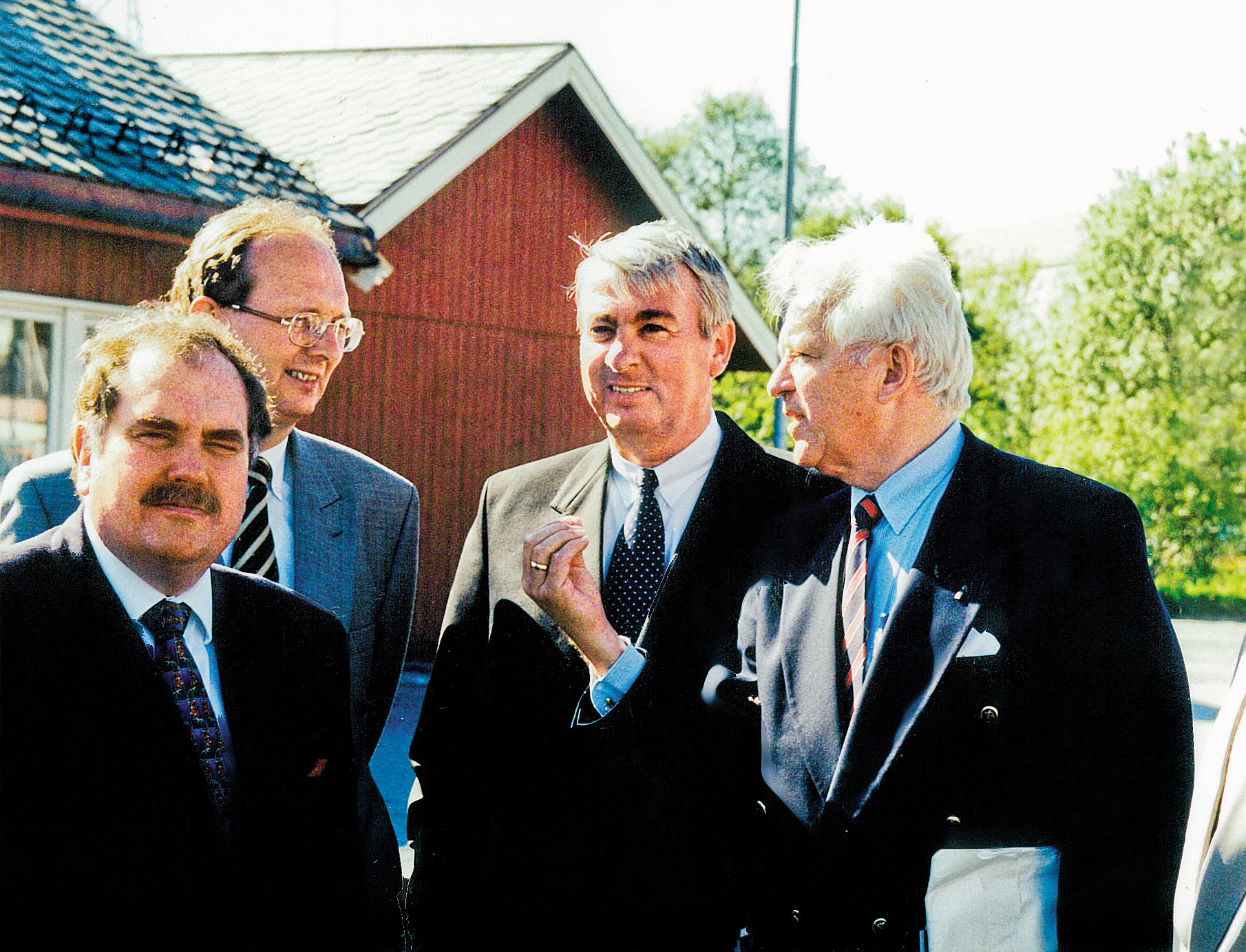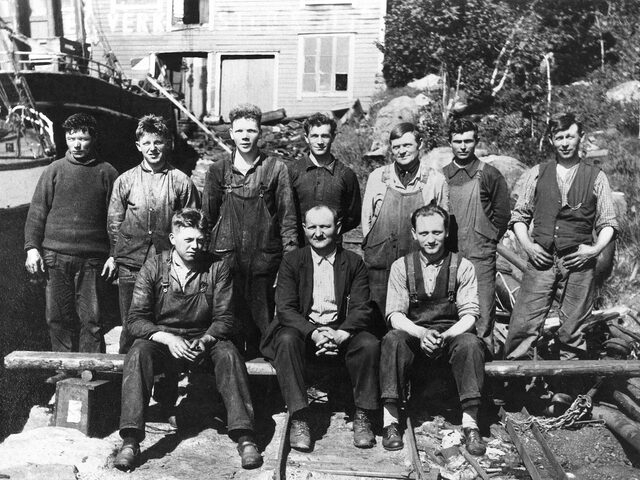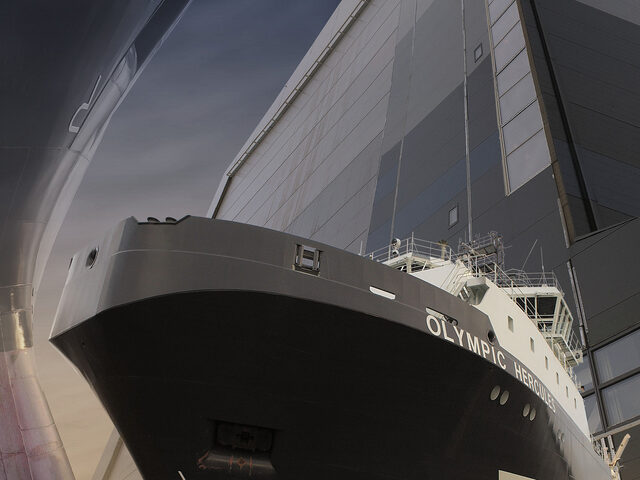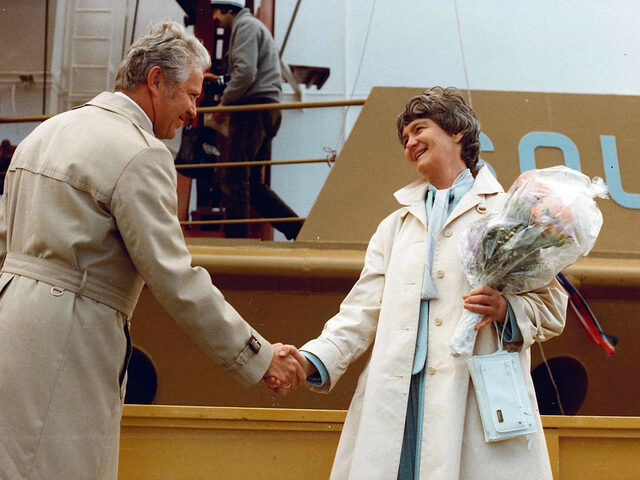Stock exchange listing
Published
In 1997, Ulstein was listed on the Oslo stock exchange. That led to major alterations in the company two years later.
In the early 1990s one started to discuss what would be the right thing to do now that the third generation had arrived on the scene and wanted to have a say in the future of the group.
This generation consisted of a large flock of 24 cousins. So it would not be very likely that they all had the same vision of how the group should develop.
To avoid any future conflicts, two to three methods were proposed. One of the proposals was to list the company on the stock exchange so that any value created could be capitalised and thereby allow each individual to control his/her own share. What would be achieved by a stock exchange listing would be a greater focus on business and less consideration to kinship. In this way one could dispense with the personal, family-related issues in the group. In addition it would also be a way of raising more capital.
After long, and often complex, discussions back and forth in 1992/1993, it was decided that the Ulstein Group would be listed on the stock exchange. An important decision had thus been made, and the course was set.
But there was a long way to go. The Ulstein Group was not listed on the stock exchange until October 1997. The company was priced at NOK 1.05 billion at the time.
Vickers acquires Ulstein
Just after the stock exchange listing, Ulstein contacted the British industrial company Vickers to determine whether there was any interest in cooperation between Ulstein Propeller and Kamewa. Vickers was the owner of the propeller manufacturer Kamewa at the time.
Negotiations were initiated, and these negotiations resulted in people from the companies involved having quite a bit to do with each other. For example, people from Vickers came to Ulsteinvik, and both Ulstein Propeller and the rest of the Ulstein Group were then introduced to them in the best possible way. What the Vickers` representatives saw and heard then must have obviously captured their interest. After a while they declared that Vickers would not settle for cooperation, they wanted to make an acquisition. Not only did they want to buy Ulstein Propeller, they wanted to buy the entire Ulstein Group!

Above: Morten Ulstein and Idar Ulstein in talks with Vickers representatives.
And that is what happened. There were of course many extensive negotiations with Vickers, with chairman of the board Idar Ulstein leading the negotiations on behalf of the Ulstein Group, before the sale was in order and the price agreed on. The final agreement was made at Gardermoen, and the price ended up at NOK 3.9 billion, which must be said to be a very good result. It was twice the highest price that Ulstein had achieved on the stock market. The CEO of Vickers plc, Paul Buysse, described the acquisition as a “Marriage in heaven”.
Two to three months after the Ulstein Group was sold to Vickers, the following happened: All of Vickers, including the Ulstein Group, was sold to Rolls-Royce!
This was perhaps somewhat of a surprise to many of those who were involved in the negotiations between Vickers and Ulstein. What Vickers did or did not do was of course nothing other than what Vickers could itself control. Anyway, Rolls-Royce now owns and operates Ulstein Propeller and the other companies in Norway and abroad that belonged to Ulstein before its sale to Vickers.
Vickers did not want to keep the shipbuilding division, and this is something that was regarded as a requirement in connection with the acquisition. This division consisted of Ulstein Verft, Ulstein Elektro, Ulstein Flextransport, Castor, several real estate companies and a shipping company, Ulstein Shipping IV, which owned a tug.
The shipbuilding division was therefore bought back, and all the shareholders in Ulstein Holding ASA were given an offer to purchase shares in Ulstein Mekaniske Verksted Holding (UMVH), which was the new name of the shipbuilding division. The company was valued at NOK 100 million. As a result of this there are currently around 600 shareholders in the company.
What we can call the original family – Martin and Inga’s six children and their children’s children hold 98.1% of the shares.
UMVH has become a family business once again.
Idar Ulstein set as a condition if he was to take care of the shipbuilding division that he and his family must have full right to manage the business. This meant, for example, that he would have the right to appoint the CEO and other managers in the new company. And one thing that he was sure of was that two of his children, Gunvor and Tore, should be in the top management. And this is what happened: Gunvor, who had been the sales manager in Ulstein Bergen, became the managing director and subsequently the CEO. Tore, who had worked as a project manager with business development in Ulstein Consulting, became the technical manager and deputy managing director and subsequently deputy CEO.
The story above is taken from the 90 years anniversary book, published in 2007. Download the entire book here (pdf).


